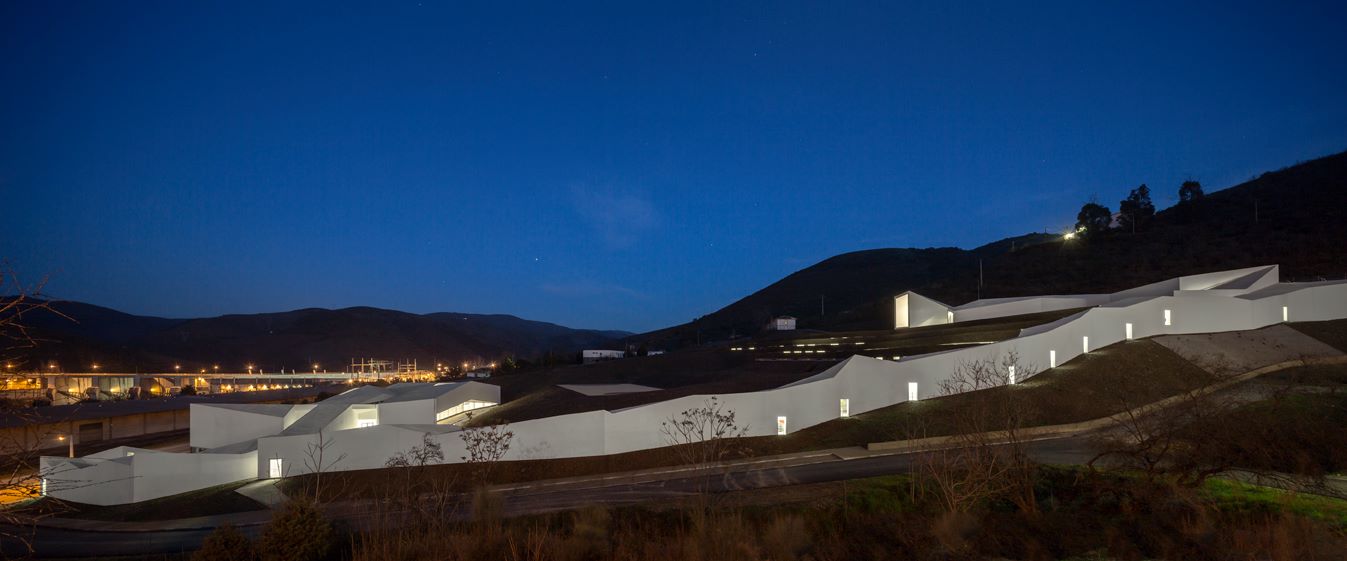The Adega Alves de Sousa (Santa Marta de Penaguião), by the architect Belém Lima, and the Espaço Miguel Torga (Sabrosa), designed by the architect Souto Moura, received honorable mentions.
In an interview with Lusa in 2015, when awarding the ECOLA international award to the High Yield Center project, Álvaro Fernandes Andrade recalled that one of the "strongest difficulties of the project" was that the sport was "one of the sports that has more adapted rowing athletes ", something that had to be taken into account in the process.
Another difficulty related to the issues of sustainable development, although without classification: "If there are things that I am not looking for are labels to assign to the architecture, I am interested that these components can be integrated in the normal development of the architectural project".
"There is that ambiguous and ambivalent demand that the formal structure looks like a terraced area, but it shows that it is a new way of inhabiting the Douro," said the professor of the Faculty of Architecture of the University of Porto, on the river along which the building was built.
This different form of socalco intends to welcome "athletes' feet", unlike the traditional Douro trees that are used to plant "feet of vines", said the architect.
The 2016/2017 edition of the Douro Architecture Prize was attended by 20 interventions, including wineries, tourist accommodation units, museums and service buildings.
The biennial prize seeks to distinguish and promote good architectural practices carried out in the region after the inclusion of the Alto Douro Vinhateiro on the UNESCO World Heritage List on 14 December 2001.
Launched 10 years ago by the North Regional Coordination and Development Commission, the contest is aimed at interventions for the construction, conservation or rehabilitation of buildings or architectural ensembles, as well as interventions of urban design in public space, made after classification.
The last edition of this award, corresponding to the years 2013/2014, was won by the Côa Museum, the architects Camilo Rebelo and Tiago Pimentel.
.
An asset to Foz Côa
The Chamber of Foz Côa views this distinction with "enough responsibility, naturalness and exigency". "From this moment on, we know that, in addition to having two heritage sites of humanity (Alto Douro Vinhateiro and Rock Engravings), we also have other prizes that have been distinguished not only at the national level, but also at the level of the territory of the Douro," the vice-president of the local authority, João Paulo Sousa, told reporters after receiving the award from the Minister of Culture.
Inaugurated on July 6, 2016, the High Center of Pocinho represented an investment of seven million euros.
According to João Paulo Sousa, the center "is being visited by vast people, not only by athletes of high competition," being planned "to internationalize" in order to attract more people to the county.
This project arose "from a requirement of teams that already made high competition", concretely Russian teams that often moved to the county.
"We were told that it was important to build an enterprise, because that mirror of water that was next to the Pocinho dam was one of the best for rowing and canoeing," he said.
The vice-mayor said that the center has three areas - training, accommodation and leisure - and "is not solely and exclusively restricted to the whole practice of sport."
Its setting in the Douro landscape was one of the concerns: "it is a white building that accompanies the terraces, precisely so as not to create a discrepancy in terms of environmental impact."
João Paulo Sousa recalled that, with the navigability of the Douro, which takes many boats to pass in the Pocinho area, this is seen as "another emblematic work of the Douro."
Despite the success of this project - which registers greater use between January and May -, the vice-mayor admitted that there is "still much to do" to get beyond the interior.
"It's much easier to be in Porto or in Lisbon than to be in that interior. But let's fight, we will not lower our arms, and I think with these prizes we will get Foz Côa again on the map," he said.
The Minister of Culture, Luís Filipe Castro Mendes, considered that good architecture "is a factor of attraction, of sustainability", being important for all the activity of the region and the desired progress.
"That's why this number of high-quality architectural projects in this whole area deserves our attention.”
Source: www.publico.pt | LUSA



